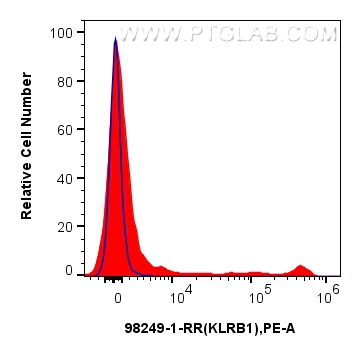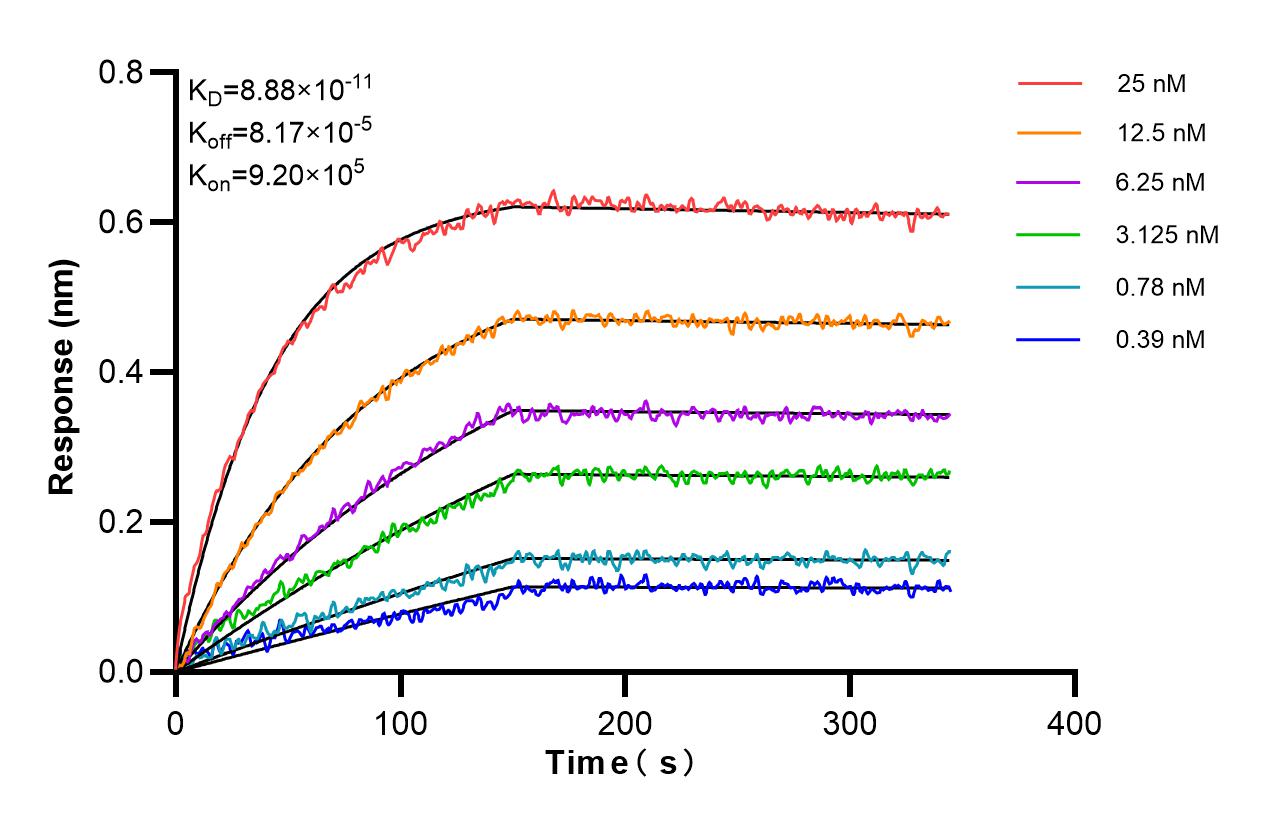验证数据展示
经过测试的应用
| Positive FC detected in | rat splenocytes |
推荐稀释比
| 应用 | 推荐稀释比 |
|---|---|
| This reagent has been tested for flow cytometric analysis. It is recommended that this reagent should be titrated in each testing system to obtain optimal results. | |
| Sample-dependent, Check data in validation data gallery. | |
产品信息
98249-1-RR targets KLRB1/CD161 in FC applications and shows reactivity with rat samples.
| 经测试应用 | FC Application Description |
| 经测试反应性 | rat |
| 免疫原 | Recombinant protein 种属同源性预测 |
| 宿主/亚型 | Rabbit / IgG |
| 抗体类别 | Recombinant |
| 产品类型 | Antibody |
| 全称 | killer cell lectin-like receptor subfamily B, member 1A |
| 别名 | Klrb1a, Killer cell lectin-like receptor subfamily B member 1A, CD161a, CD161 antigen-like family member A, Antigen 3.2.3 |
| 计算分子量 | 25 kDa |
| GenBank蛋白编号 | NM_001010964.1 |
| 基因名称 | Klrb1a |
| Gene ID (NCBI) | 362443 |
| 偶联类型 | Unconjugated |
| 形式 | Liquid |
| 纯化方式 | Protein A purfication |
| UNIPROT ID | P27471 |
| 储存缓冲液 | PBS with 0.09% sodium azide , pH 7.3 |
| 储存条件 | Store at 2 - 8°C. Stable for one year after shipment. |
背景介绍
CD161, also known as KLRB1 or NKR-P1A, is a type II transmembrane C-type lectin-like receptor and is expressed on the cell membrane as disulfide-linked homodimer (PMID: 8077657). It is expressed by the majority of NK cells and subsets of peripheral T cells, including both CD4+ and CD8+ T cells, and is expressed preferentially on adult T cells with a "memory" antigenic phenotype (PMID: 8077657; 22566826). Expression of CD161 correlates with the cytotoxic function of CD16+ NK cells, and ligation of CD161 with its ligand LLT1 inhibits NK cell cytotoxicity and cytokine secretion (PMID: 29686665).
实验方案
| Product Specific Protocols | |
|---|---|
| FC protocol for KLRB1/CD161 antibody 98249-1-RR | Download protocol |
| Standard Protocols | |
|---|---|
| Click here to view our Standard Protocols |


